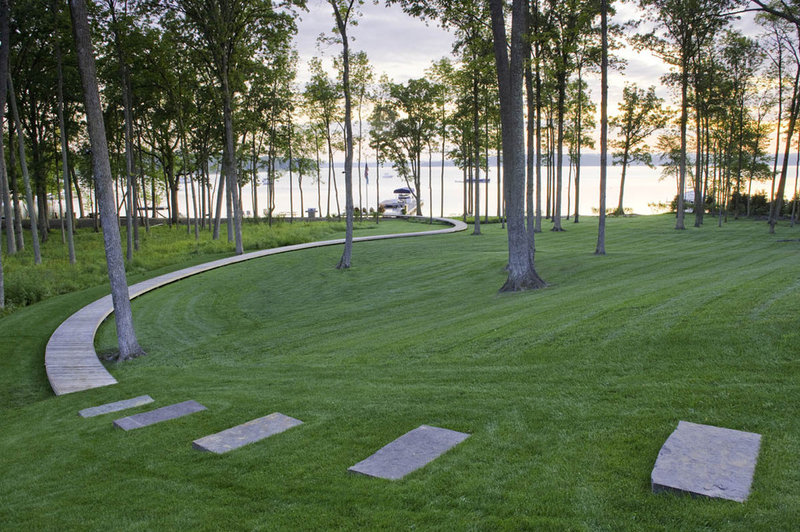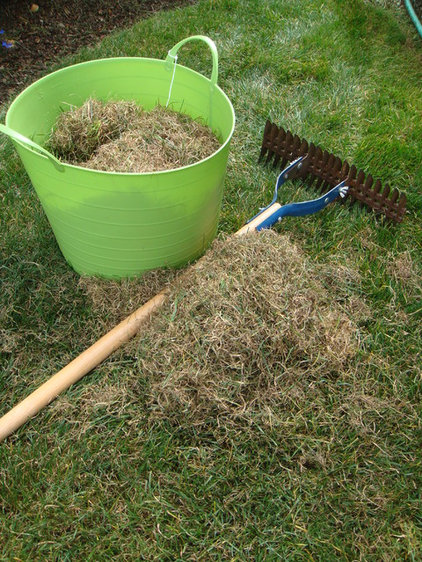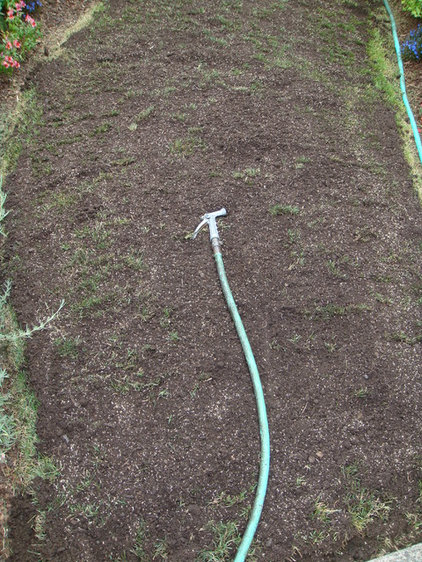 Wagner Hodgson
1. Know your grass. There are cool-season and warm-season grasses, and several varieties in each category. In Gainesville, we grow warm-season lawns and below are a list of the types commonly found in Alachua County.
Gainesville lawn grasses (St. Augustine, Bermuda, Zoysia, Centipede, and Bahia) grow best in warmer climates, but all of these Gainesville lawns have different needs and maintenance practices to keep them healthy year-round.
Wagner Hodgson
1. Know your grass. There are cool-season and warm-season grasses, and several varieties in each category. In Gainesville, we grow warm-season lawns and below are a list of the types commonly found in Alachua County.
Gainesville lawn grasses (St. Augustine, Bermuda, Zoysia, Centipede, and Bahia) grow best in warmer climates, but all of these Gainesville lawns have different needs and maintenance practices to keep them healthy year-round.Be sure to check with your local Gainesville lawn experts for specific recommendations for turf grass in your area.
 Fairfield House & Garden Co
2. Gainesville Fertilization. In the fall, fertilize your lawn with an NPK (nitrogen, phosphorus, potassium) ratio of 3-1-2 or 4-1-2. The ratio doesn't need to be exact, but do try to get a product with similar amounts. Plan to use approximately 1 pound of fertilizer per 1,000 square feet of lawn and always follow the package directions. Applying too much Gainesville lawn fertilizer will not help your grass and, in fact, may damage it.
Fairfield House & Garden Co
2. Gainesville Fertilization. In the fall, fertilize your lawn with an NPK (nitrogen, phosphorus, potassium) ratio of 3-1-2 or 4-1-2. The ratio doesn't need to be exact, but do try to get a product with similar amounts. Plan to use approximately 1 pound of fertilizer per 1,000 square feet of lawn and always follow the package directions. Applying too much Gainesville lawn fertilizer will not help your grass and, in fact, may damage it.
 J. Peterson Garden Design
3. Dethatch. Thatch is the buildup of dead roots and stems that develop between the soil and the green grass blades.
J. Peterson Garden Design
3. Dethatch. Thatch is the buildup of dead roots and stems that develop between the soil and the green grass blades.
If you have just a little buildup, you can use a hard rake or a dethatching rake to remove the dead grass, but if you have more than 1/2 inch you will need to core aerate in the fall or the spring.
Core aeration uses rentable equipment to remove plugs of soil, increasing the soil's ability to receive water, air and fertilizer. If your buildup is thicker than 2/3 inch, you will need to not only core aerate but add 1/8 to 1/4 inch of organic matter like compost or peat. Water in well.
 Jocelyn H. Chilvers
4. Control weeds. September and October are the best months to control perennial broadleaf weeds like clover and dandelions. These weeds are busy taking in sun and nutrients to get them through the winter months, so that means they are open to receiving weed killers as well.
Jocelyn H. Chilvers
4. Control weeds. September and October are the best months to control perennial broadleaf weeds like clover and dandelions. These weeds are busy taking in sun and nutrients to get them through the winter months, so that means they are open to receiving weed killers as well. If you have just a few weeds, pull them out by hand, but more numerous weeds may require a Gainesville Lawn Program that includes safe chemicals — either organic or nonorganic. As with fertilizers, always follow the package directions when applying any chemical to your lawn to avoid damaging it and the surrounding plants. Don't worry about any bare spots left by weed removal; your healthy grass will take over those areas in no time.
 J. Peterson Garden Design
5. Sow grass seeds. If you have large bare areas left by weed removal or simply need to establish a new or extended part of your lawn, mid-August to mid-September is the best time to sow grass seeds. Some grasses, however, do not grow from seed such as St. Augustine.
J. Peterson Garden Design
5. Sow grass seeds. If you have large bare areas left by weed removal or simply need to establish a new or extended part of your lawn, mid-August to mid-September is the best time to sow grass seeds. Some grasses, however, do not grow from seed such as St. Augustine.Before you sow, be sure you have prepared the soil correctly to get the best results. Till the soil at least 6 inches deep, add 1/2 to 1 inch or so of compost or peat, rake the soil smooth and sow the seeds. Water in well and keep the soil consistently moist until after the new growth emerges, or about 6 weeks.
